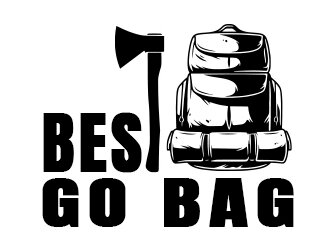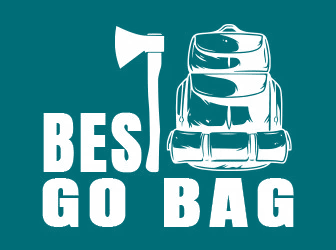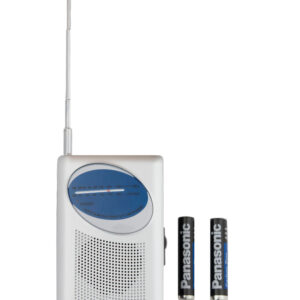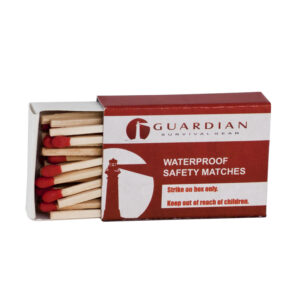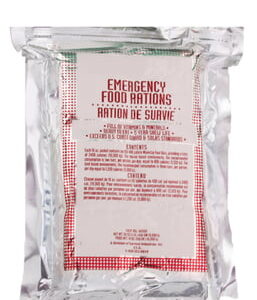15 Advanced Prepper Supplies You Need to Survive Any Disaster
As an individual who prepares for unforeseen circumstances, advanced prepper supplies are paramount for any emergency. While fundamental provisions like water, food, and shelter are crucial, these advanced supplies can significantly assist you in surviving and prospering during a disaster. This article will guide you through the 15 exceptional prepper supplies you must possess to […]
20 Best Prepper Websites You Need to Follow
In today’s unpredictable world, preparing for emergencies and disasters is crucial. Whether you’re interested in survival skills, emergency preparedness, or self-sufficiency, numerous prepper websites provide valuable information, resources, and guidance. In this article, we will explore the 20 best prepper websites that you need to follow. These websites cover a wide range of topics related […]
19 Must-Visit Survivalist Stores for Your Next Adventure
Discover top survivalist stores for all your outdoor gear needs. From camping essentials to emergency tools, these stores have you covered for your next adventure. Gear up and embrace the great outdoors! 19 Must-Visit Survivalist Stores for Your Next Adventure Below, we explain the top 19 survivalist stores for the next adventure. Wilderness Outfitters Wilderness […]
3 Basic Paracord Knots For Beginners
Paracord Knot for Beginners offers an exciting avenue for creativity and practicality, and at its core lies the essential skill of mastering the paracord knot. 550 Paracord, short for parachute cord, is a versatile and robust rope that has gained popularity for its wide range of applications, including crafting. One of the best ways to […]
Top 11 Paracord Braid Patterns
Paracord braid patterns refer to the techniques and designs used to weave and create intricate structures with 550 Paracord. These patterns involve interlacing and knotting the strands of Paracord in specific ways to form various decorative and functional items. Each design results in a distinct and visually appealing appearance, with some being simple and easy […]
Prepper Food Storage: 10 Mind-Blowing Ideas That Will Amaze You!
In today’s unpredictable world, being prepared for emergencies is paramount. One crucial aspect of emergency preparedness is food storage. An ample supply of nutritious and long-lasting food can make all the difference during challenging times. In this article, we will explore ten mind-blowing ideas for prepper food storage that will amaze you and ensure your […]
Top 25 ways 550 Paracord can be used during Emergencies
The 550 paracord (also paracord or 550 cord when referring to type-III paracord) is a strong and durable type of rope made from nylon. It was initially used for parachutes but is now famous for many other purposes. The “550” in its name refers to the minimum weight it can hold, which is 550 pounds. […]
8 Things You Should Never Store in the Heat
If you’re like most people, finding places in your home to store items you don’t use every day can be a problem.
We all accumulate a lot of stuff through the years. Including many things we don’t want to get rid of because every once in a while we need them. Or we want to give them away someday. But because we don’t use them often, we don’t want them cluttering our living spaces.
Many of these items end up in closets, basements, garages, and laundry rooms. In most cases, that’s fine.
But other than basements, some of those areas can get pretty warm. Especially garages. And certain items should definitely not be stored in an area where temperatures get too high.
High temps are a formidable enemy
Today I want to list 8 items you should not store in the heat. Each of them can be compromised or even destroyed by higher temperatures.
Canned food. It might seem like food inside a sealed can would be protected from outside elements, but that’s just not true. Temperatures exceeding 85° Fahrenheit can spoil food inside a can. Dampness inside a garage, for example, can cause cans to rust.
Wooden furniture. Perhaps you have old wooden furniture you want to gift to adult children or grandchildren, but they’re not quite ready for it yet. So, you keep it in the garage for now. Not a good idea. Temperature and humidity changes can make the wood expand and contract until it becomes warped.
Electronics. Heat and humidity, found in places such as garages, could render electronics such as PCs, printers, and gaming consoles useless. Their internal printed circuit boards will get fried. Heat-loving insects might also venture inside those items and damage them.
Clothing and bedding. If you keep either of these items in an area that gets a lot of heat, they’d better be in secure, temperature-proof containers. Otherwise, heat, humidity, and insects will produce considerable damage, including mold and mildew.
Spare refrigerator. This appliance does its best work when it’s in a climate-controlled room, generally between 65° and 78°. When stored in the heat, it will have to work overtime to keep contained items cold or frozen. And that means a higher-than-normal electric bill.
Photographs and records. As we age, there are few items we treasure more than our memories. And many of those memories are contained in photo albums. Keep them in a cool, dry, and dark place. In a hot area such as a garage, they can fade and get stuck together. Record albums warp in the heat. Books deserve a better home too.
Pet food. If someone is thinking, “It’s just a cat or dog. Who cares where their food is kept?” they probably shouldn’t own a pet. Warm temperatures can cause all kinds of food to spoil – including dog and cat food – so store bags of pet food at normal room temperature and keep them tightly sealed.
I saved one of the most important things to not store in the heat for last. It’s…
Batteries. As with food, water, and other essential items, batteries can go bad if not stored properly. It’s crucial to keep your batteries in the best possible shape. You never know when you’re going to desperately need them. Corrosion can occur when they’re stored in high temps. That can lead to dangerous leakage or even an explosion.
Where should I keep batteries?
So, if we shouldn’t store batteries in an area that experiences heat, where should we keep them? Glad you asked.
You’ve probably heard the old wives’ tale about extending battery life by storing batteries in your freezer. Perhaps you’re already doing that. This is something battery and survival experts have tested.
The majority has determined that storing batteries in a freezer does not extend their life. And in fact, it might make them less effective.
In storage, make sure opposing ends of batteries are not touching one another, and don’t store batteries with other metal objects. Keep the plastic caps on 9V batteries until they are in use.
And make sure batteries won’t be punctured or crushed while in storage. Keep them inside a container that cannot be smashed or otherwise damaged.
Energizer & Duracell chime in
Energizer officials state that storage in a refrigerator or freezer is not required or recommended for batteries produced today. Cold temperature storage can harm batteries if condensation results in corroded contacts, or label or seal damage due to extreme temperature storage.
To maximize performance and shelf life, store batteries at normal room temperatures (68° to 78°F) with moderated humidity levels. When stored at room temperature, cylindrical alkaline batteries have a shelf life of 5 to 10 years and cylindrical carbon zinc 3 to 5 years.
Lithium cylindrical types can be stored from 10 to 15 years. Prolonged storage at elevated temperatures will shorten storage life.
Duracell officials recommend storing batteries in original packaging, in a dry place at normal room temperature until ready to use.
It’s also a good idea to not mix old and new batteries, or batteries of different brands or types (for example heavy-duty zinc chloride batteries and alkaline batteries). Older batteries can drain energy from newer ones.
You want to get the longest life possible out of your batteries. How you store them greatly factors into their life expectancy. Keep them out of the heat.
Prep for Summer: How to Stockpile Food on a Budget
Food insecurity is a phrase we’ve heard many times. But usually it’s in connection with other countries.
Unfortunately, we’re now hearing it quite often in the U.S. In fact, the rise of food insecurity is being called “unprecedented” by anti-hunger advocates.
Food insecurity – defined as lacking enough food to live a healthy, active life – is caused by a number of factors. Chief among them are inflation and extreme weather events. Not to mention drought affecting crop yields, plus food stamp cuts,
According to the latest U.S. Census, the number of Americans who say they sometimes don’t have enough to eat has risen from 15.8 million prior to the pandemic to 19.2 million last month.
Summer storms add to challenge
We can’t stop the conditions causing this problem, but we can prepare for food shortages. Do you have a stockpile of survival food ready in case of emergency?
If your answer is no, I’ve got a great, free way to get you started. And if your answer is yes, I’ve got a great, free way to add to your emergency food supply. Either way, you win. More on this in a moment.
There are a number of problems that could occur this summer that would make having a stockpile of survival food even more important than usual.
They include hurricanes, tornadoes, wildfires, droughts, and heat waves. Each could result in food supply chain issues no matter where you live.
When you have a survival food stockpile, you don’t have to worry about that stuff. You have peace of mind.
But for some of us, finances are standing in the way of putting together a supply of non-perishable food that can hold us over when the going gets even rougher.
Nearly 2/3 of Americans live paycheck to paycheck
It’s easy for me to say, “Get a stockpile of survival food.” It’s another thing to be able to afford it. Inflation has hit all of us very hard.
According to a recent report from CNBC, 63% of Americans are living paycheck to paycheck. That’s nearly two-thirds of us.
Why? Because rising prices are outpacing income gains. There is less cushion in monthly budgets. Anuj Nayar is the financial health officer for the LendingClub report. Here’s what he says.
“Consumers are not able to keep up with the pace that inflation is increasing. Being employed is no longer enough for the everyday American.”
Things are tough; we need to be tougher
As a result, many people aren’t even thinking about trying to stockpile food. They’re focused on surviving until the next paycheck.
And if they are thinking about it, they say they’ll start or continue stockpiling food when things improve.
Well, that seems like faulty thinking to me. There is no guarantee things are going to get better in the near future. In fact, there’s reason to believe they could get worse.
The way things are going in the world, we need to be prepared. Fortunately, there’s a way to prepare for an uncertain future. Even on a tight budget.
Watch for long shelf lives
It doesn’t cost an arm and a leg to do this. There are some simple and inexpensive things we can do now to get ready for a crisis.
Following an emergency, it’s likely the electrical grid will not be functioning properly. If at all. So you want to make sure a vast majority of your food items are non-perishable.
In addition, we don’t know how long an emergency will last. So it’s best to have as much food stockpiled as possible. And make sure most of it has a long shelf life. In the meantime, for items that don’t, rotate them out periodically so they don’t go bad.
If you’re not already in budget mode, try to get there. That means always thinking about how you can spend less and save more. Among the philosophies that must become part of your daily life regarding food are the following:
- Never pay full price for anything. Always look for bargains. Watch for flash sales. These one-day events offer great savings, but you have to act quickly.
- Buy items in bulk at places such as Sam’s Club or Costco. Or when they’re on sale in regular stores.
- Cut and use coupons.
- Find and use in-store-only offers.
- Grow your own food and preserve it. There is tremendous savings in growing fruits and vegetables. And storing some of them for the colder months of the year.
- Watch for the best deals on websites such as Amazon. They could have exactly what you’re looking for, at a price much less than what you’d spend at a local store.
Tips and tricks
One of the first places you want to look at to save money is your weekly grocery bill. If you’re not paying attention, it can really add up. These days, the average couple spends well over $500 a month on groceries. Let’s look at a few simple ways to save.
Make a list. Grocers know how to position products so shoppers will purchase them. If you have a list, you know just what you need (and what you don’t). And of course, if you avoid shopping when you’re hungry, it’s that much easier to resist tempting displays.
Also, choose foods your family will eat. Variety is important, both physically and psychologically. You could buy some of the healthiest food in the store, but if your family won’t eat it, you’ve thrown your money away.
Shop at Aldi. This no-frills chain offers a smaller variety of products. Usually one store brand of each item. If there is an Aldi in your area, you can easily save money on your grocery bill. Prices are often even better than at Walmart.
Aldi stores now offer imported foods, fancy cheeses and lots of fresh (even organic) produce. And you’ll save a few pennies by taking your own grocery bags.
Buy store brands. Buying store brands alone can take a huge chunk out of your grocery costs. Sometimes there will be a brand name item or two you can’t do without. But more often you won’t notice the difference. Except when it’s time to check out.
Buy in bulk. I’m not talking here about warehouse stores, which have membership fees. And usually a minimum price tag of $10 per item. Even in a regular grocery store, you don’t want to buy large amounts of just anything on sale.
It’s about buying more of things you already use often when there’s a significant sale. If it means you shop less often, this can add up to even more savings.
Another item to purchase in bulk is produce. Onions, potatoes, apples and lemons are almost always cheaper when you buy the bag. Just make sure you actually use them so they don’t go to waste.
Buying beans and grains in bulk can also stretch your dollars while providing hearty, healthy meals.
Use digital coupons. Many stores offer digital coupons not available in the weekly newspaper. To acquire these savings, you’ll likely need to set up an account and check off the coupons you wish to use each time you shop.
Doing this ahead of time as you scan the weekly circular can help you write your shopping list around items with the biggest savings.
Stick to the store perimeter. Center aisles have many expensive, processed foods full of salt, sugar, and other additives. The outside ring of the store is where you’ll find more foods such as produce, meat, and dairy.
You’ll still need to visit the center aisles for a few things. But focusing on the perimeter will give you more bang for your buck. Try leaving your cart at the end of the aisle, and just dash in for the item you need.
Freeze meals. If you’re buying in bulk, you’ll want to make sure things don’t go to waste. You can freeze many items including bread, milk, and chopped vegetables, as well as whole meals. Just remember your power could go out in a crisis.
There are cookbooks with recipes for freezing meals in bulk. When you make a meal, cook enough for two meals so you can serve one and freeze the other. It requires almost no extra work, but will save you time and money.
Use fewer ingredients. Sometimes the simplest food tastes best. But you wouldn’t always know it looking at some of the complicated recipes out there.
Sites such as Allrecipes (AllRecipes.com) are great for finding different options for your favorite recipes. And usually the top reviews will include tips on how to make them even easier.
We’ve all learned that preparedness is crucial. Regardless of how tight our budgets are. By following some of the suggestions above, we can all afford to be prepared for whatever life throws at us.
Free 72-Hour Survival Food Kit
Earlier I promised a free way to get you started on your food stockpiling journey or a free way to add to your stash.
For a very limited time, I’m offering you a free 72-Hour Survival Food Kit from 4Patriots. All I ask is that you pay shipping and handling, which I think is fair.
This emergency food kit features a total of 16 servings, with Grammy’s Sweet Oatmeal for the morning, America’s Finest Mac & Cheese for noontime and Creamy Rice and Vegetable Dinner for the evening.
Simple to prepare, this delicious and nutritious food will carry you through a rough 72-hour stretch. And it’s designed to last 25 years under proper storage conditions.
Here’s how to get your free 72-Hour Survival Food Kit…
† Today your survival food kit is FREE, simply cover $14.95 S&H. This exact kit regularly sells for $27 plus $14.95 S&H on our website. Click here to see it.
* 25-year shelf life under proper storage conditions. Excess heat and/or damage to packaging may decrease shelf life. For more information, see footnote 8.
+ You may want or need more calories per day, especially if you’re pregnant, a child, elderly, or have other health conditions. For more information, see footnote 2.
Canadian Wildfires Sending Harmful Smoke Our Way
Canadian Wildfires Sending Harmful Smoke Our Way
America has enough problems dealing with its own domestic issues.
Including extreme weather, cyber and physical attacks against the electric grids, aging infrastructure, freak accidents, and even EMP threats.
Now, smoke from hundreds of Canadian wildfires is invading the northern portions of the U.S. It’s causing health concerns ranging from breathing difficulties to the threat of water supply problems. And perhaps even a lack of access to food.
The American Red Cross is advising residents in some areas to stay inside and keep doors and windows closed. Having a reliable supply of clean drinking water and non-perishable food just became even more important. More on that in a moment.
Worst Wildfire Season Ever?
As of this writing, more than 10 million acres of land has been scorched in Canada. That’s more than 15 times the national annual average for this time of year for our neighbors to the north.
Wildfires are not uncommon in Canada. But it’s out of the norm for fires to blaze in the eastern and western portions of the country simultaneously.
Nine of the country’s 13 provinces and territories have seen fires, and more than 100,000 people have evacuated their homes. The eastern province of Quebec has been the hardest hit.
What’s to blame? Record-high temperatures in the provinces of Alberta, Nova Scotia, and Quebec. Plus strong winds, drought conditions, lightning strikes, and negligent hikers and campers. If this rate of fire activity continues, it will be the worst wildfire season in Canada’s history.
Haze Reaches Florida
A number of countries around the world have joined the U.S. in lending a hand. America has already sent hundreds of firefighters to assist.
In the U.S., especially in the Northeast, people are seeing, feeling, and breathing the smoke. Hazy conditions are in play in cities such as New York, Philadelphia, and Washington, D.C.
And it’s already drifted down to Kentucky, Virginia, and other Mid-Atlantic sections, placing millions of residents at risk. Some of the smoke and haze has even drifted as far south as Florida.
The first thought people have when it comes to smoky conditions is air quality. Many who assumed they’d retired their pandemic facemasks are wearing them again while outdoors.
But wildfires can also negatively affect our water supply. And being forced to stay indoors can make obtaining food more difficult.
Water Quality Could Take a Hit
Water quality can be compromised by wildfires not only while fires are burning, but even months and years after they’ve been extinguished.
Watersheds are land areas that channel rainfall and snowfall to various bodies of water. Once they are burned, flooding and erosion can allow contaminants to enter groundwater. As well as creeks, rivers, and lakes.
This can take its toll on water purity. Including in supply reservoirs and water treatment processes. Another issue with erosion is the formation of harmful algae, which can deprive aquatic life of oxygen it needs.
Erosion can also push nutrients normally found in the ground into bodies of water. The ground is then unable to produce the same quality of plant life used for food.
Prepare for a Wildfire
Canada is hardly unique when it comes to wildfires. These blazes have been a major problem in the U.S. for decades. And it seems to get worse every year.
If you live in an area prone to wildfires, it’s important to note these warnings and recommendations from the Red Cross and government officials:
· Create a family emergency plan that includes escape routes, insurance information, and where to meet loved ones.
· Build bug-out bags including supplies you’ll need for at least 72 hours. Keep at least one of those bags in each vehicle.
· Keep your vehicles’ gas tanks as full as possible.
· Remove leaves, dried branches, and other flammable materials from around your home.
· Have an emergency radio to keep you informed about current conditions in your area.
Once a wildfire is raging in your area…
· Keep windows and doors closed. Choose a room you can close off from outside air.
· Use fans and air conditioning to stay cool.
· Set up a portable air cleaner or filter to keep the air in this room clean even if it’s smoky in the rest of the building and outdoors.
· Avoid using candles, gas, propane, wood-burning stoves, fireplaces, or aerosol sprays. And don’t fry or broil meat, smoke tobacco, or vacuum.
· If you’re using a window air conditioner, make sure the seal between it and the window is as tight as possible.
· Have at least 72 hours’ worth of non-perishable food on hand per person.
Because you never know how long an emergency situation will last…
Patriot Pure Pitcher
As far as keeping cleaner, safer water on hand, we’ve got you covered there as well.
The Patriot Pure Pitcher targets 160+ contaminants. Including fluoride, lead, chlorine, mercury, and radiological contaminants. Not to mention vinyl chloride, which has entered water systems following recent train derailments.
Simple to use, the Patriot Pure Pitcher has a one-gallon lower reservoir and a filter meeting National Sanitation Foundation standards.
